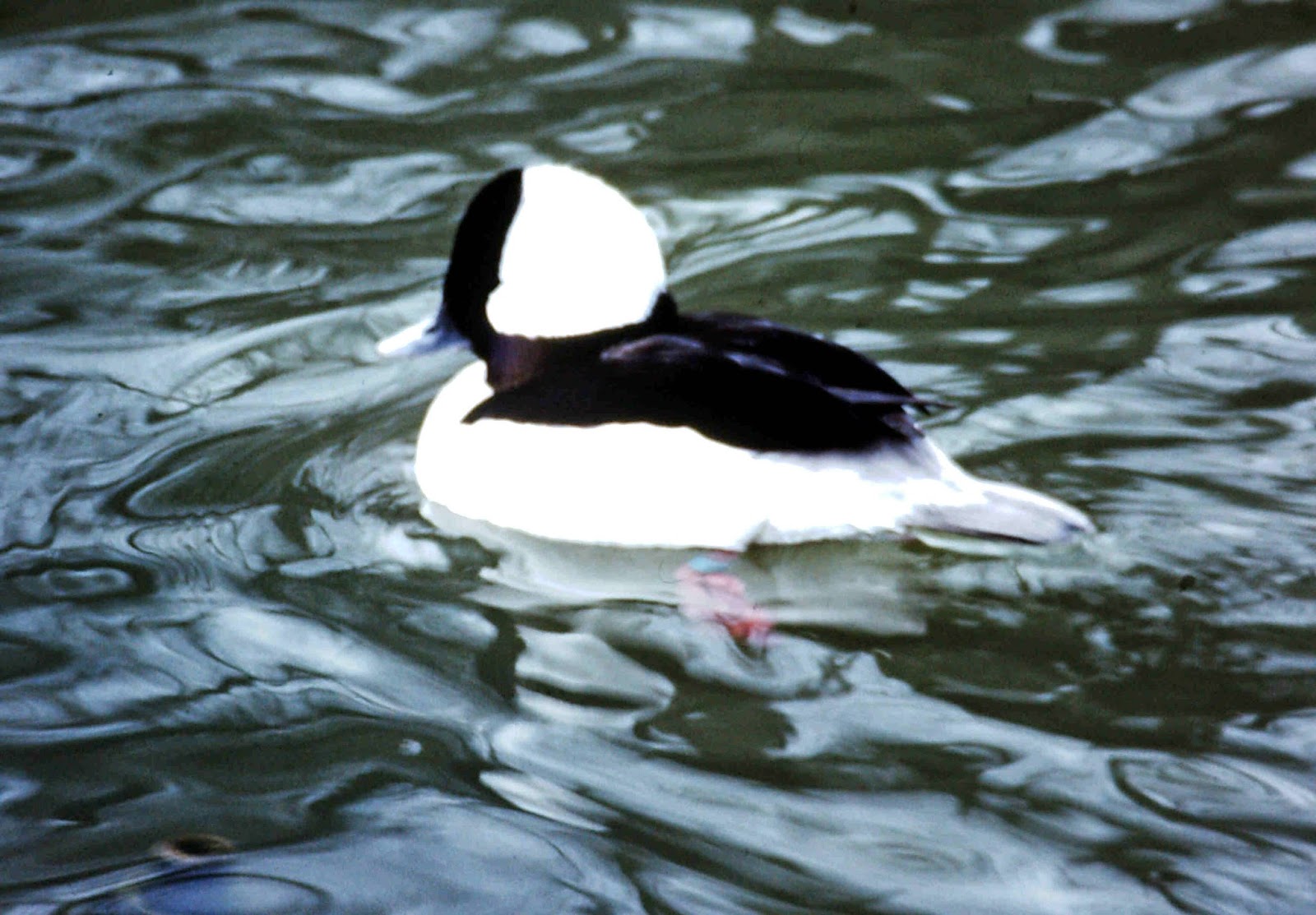By Beth Sullivan
It may or may not be
true that life began in a swamp, but for sure, Spring begins here.
We look for the earliest spring plants, such as Skunk Cabbage and
Hellebore in wetlands. We listen for the singing of the Red Winged
Blackbirds in cattails and reeds as a sure sign of the season.
Peepers and Wood Frogs chorus in the wet woods, and Spotted
Salamanders attach egg masses to sticks in the shallow pools. The
Red maples are the trees that most tolerate the wetlands and can grow
in standing water for a while. Their bright red blossoms give the
swamp a rosy haze.
 |
| Hellebore |
 |
| Red Maple flowers |
 |
| Spotted Salamander egg masses |
Several of Avalonia’s
Preserves have beautiful wetlands, but it takes a special area to
attract Wood Ducks. The Anguilla Brook runs from North Stonington
through Stonington on its way to Wequetequock Cove and Long Island
Sound. On its run it passes through several other Avalonia Preserves
and protected open spaces. The waters flow fresh and clean.
Historically they ran unrestricted, and American eels, for which the
brook is named, traveled its length.
When the waters reach
an area in Pawcatuck, before they collect in a pond then pour over a
drop to the cove, they spread out in a big wetland area which is
known as the Anguilla Brook Preserve “Birdland Tract” for its
location behind the Birdland neighborhood. The marsh is large,
shallow and almost eerie with skeletal trees, many dead from years of
being flooded, shrubs draped in vines and hummocks of grasses.
Wood Duck Territory
This is Wood Duck territory. Normally the ducks will actually nest in tree holes. In a swamp like this with so many dead trees, there are often holes for their needs. When the young hatch, they use their special toenails on webbed feet, to climb the inside of the hollow and then launch themselves out the hole! If there is water below, they will float and immediately swim. If the tree hole is over dry land, the little ducklings will hopefully land softly on the leaves below. Videos have captured them bouncing lightly before walking off to find water with the rest of their family. As stewards of the marshland we have the opportunity to provide additional nest sites.
 |
| Marshy Wood Duck territory |
 |
| Usually very secretive, this male Wood Duck showed up on a bird feeder. Photo by Bob Dewire. |
Over
the last weeks, four new Wood Duck nest boxes were installed. They
are made from lumber donated by UBS and designed and built by
member/volunteer Tom Frohnapfel and his family: Muireann, Ethan and
Fiona . We went out on a chilly day, listened to peepers, looked for
salamander egg masses, and found 4 perfect sites for the houses. Tom
returned later with metal sheeting to act as predator guards. Thank
you to Tom and his whole family for the effort, and for making it fun
to get out and put them up!
 |
| Our generous volunteers! |
 |
| Installed Wood Duck nest box |
 |
| What we hope to find when we check the nests. |
We walked back in
yesterday. Access at this point is very limited, over private
property. We did not see ducks actually in the houses, but saw a pair
in the brook. We also enjoyed other colors of spring: green
hellebore and red maple, yellow marsh marigolds and even blue…a
great blue heron flew in to check out possible nest sites!
 |
| This Great Blue Heron looks awkward high in a tree. |
We'll keep you posted!
Photographs by Beth
Sullivan and Bob Dewire.































